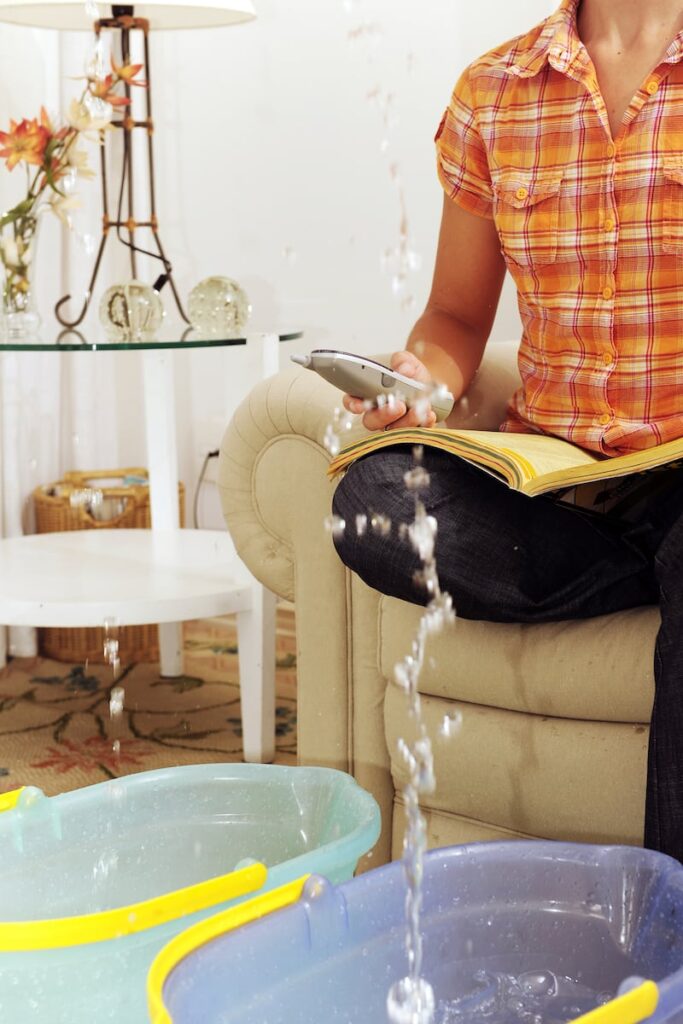Mold, mildew, and moisture can occur anywhere at any time but is especially difficult to manage in more humid climates. Because of this, did you know that our indoor environment is anywhere from two to five times more toxic than our outdoor environment?
One of the biggest culprits that perpetuates this toxicity problem is mold. This unwanted and highly toxic substance can cause major health problems, especially if one is exposed to it for a prolonged period of time.
The tricky thing about mold is that it can grow undetected for months in places like your bathrooms, kitchen, crawlspaces, basement, and garage. When there are leaks present in your ceiling or wall, no matter how small, they can ignite a mold issue. Mold can also begin to grow in your HVAC system if not properly maintained and this is one of the worst places it can appear.
Mold that lives in the air of your home can cause things like respiratory issues including coughing, wheezing, and asthma. The health effects that mold has only you is highly dependent on what kind of mold exists in your home.
So, what exactly is mold? Mold is a fungus that grows because it’s a common component of household dust. If prevalent enough, mold can cause health issues including respiratory problems, neurological problems, and sometimes even death.
Mold is typically easy to distinguish as its appearance is unique. The color of mold varies depending on the type and can be black, red, green, or blue. The texture of mold can either be fuzzy or slimy. Mold also presents a distinct and unpleasant odor.
Mold needs three crucial things to grow and develop and those three things are heat, humidity, and a food source. Unlucky for us, our natural climate already has those first two things pretty much year around.
The ideal heat for mold to grow is anywhere between 77 and 87 degrees while the ideal humidity for mold growth is 62 to 93 percent. Mold feeds on organic matter which can be found just about anywhere and makes the growth and perpetuation of it almost inevitable in some cases.

There are a number of different kinds of molds that can be found in the home including Alternaria, Aspergillus, Chaetomium, Cladosporium, Fusarium and numerous more. There is also black mold which is highly toxic and creates health problems such as “sick house syndrome.” This kind of mold is formally known as Stachybortrys chartarum. Regardless of the mold type you have or are at risk for having in your home, it’s extremely important to eliminate it immediately to prevent health risks and structural damages.
Fighting mold can be tricky but we’ve created a list for helpful and proven ways to combat existing mold or preventing it from growing in your home altogether. Free your home of airborne toxins by taking each of the following steps below.
1. Use Indoor Plants
By introducing houseplants into your home, you can immediately improve the air quality. Live plants do an excellent job at removing airborne toxins and improving your home’s air. Depending on the plant, it can remove toxins such as formaldehyde, benzene, and paint. Research the types of plants you like the best and check to see their efficiency in providing clean air for your home. If you have pets, make sure that these plants are not toxic to pets as well.
2. Dry the Wet Areas
It’s important to regularly clean all of the surfaces within your home but be sure to avoid cleaners that contain toxic chemicals. After cleaning surfaces, it’s good to get into the habit of drying each and every surface, especially in rooms like the bathroom and kitchen where moisture is much more prevalent.
Remember, moisture is one of the key ingredients for mold to grow and thrive so eliminating it will prevent mold from existing and persisting. Things like a leaky pipe, a damp basement or garage, or even a common spill on the carpet need to be dried and fixed within 24 hours so the moisture doesn’t cause mold to develop.
If you have a persisting problem with moisture in your home due to a leak, please call us today and one of our skilled and friendly team members can come assist you in the matter.
3. Use Non-Toxic Cleaning Products
Did you know that cleaning products with an overwhelming scent are usually some of the most toxic? This is especially true of solutions that mimic the scent of pine or lemon. When using these toxic cleaners in the home to prevent or rid an area of mold, the concept is essentially trading one contaminant for another.
In terms of managing mold in the home, it’s advantageous to make the switch to non-toxic or green cleaning products that don’t contain harsh or harmful chemicals. These cleaners are usually much less mild when it comes to scent but are still successful in getting the job done.
4. Keep A Flow of Fresh Air
Fresh air is excellent for so many different things, including preventing mold. When you keep a flow of fresh air within the home, you’re improving the air quality, lowering carbon dioxide levels, eliminating the number of airborne toxins, and lowering your risk for mold.
An environment with high carbon dioxide levels can cause lower oxygen levels in the body which in turn lowers the flow of oxygen to one’s brain. If your home has been closed off from fresh air for a number of months, this buildup of carbon dioxide can occur, especially in rooms where you hang out the most.
Fresh air will help to eliminate this problem as well as dry out the air, preventing unwanted moisture. Fresh air is good for your body, good for your home, and good for your mind!
5. Maintain Humidity Levels
Because mold needs humidity to grow and thrive, it’s a smart idea to keep the home as least humid as possible. In the areas of your home that are naturally moist because of what you do in them, make sure they have proper ventilation so the moisture has somewhere to go and doesn’t buildup over time. Use the vent fans in your bathroom and kitchen. If you don’t have any, consider installing them and don’t hesitate to call us for assistance.
If certain rooms or your entire home struggles with humidity levels, you can always invest in a dehumidifier. It’s also important to pay close attention to the humidity levels in your HVAC system. If you have mold present in there, it immediately is put into your airspace and you can inhale it without being aware which is very dangerous. Keep your HVAC system thoroughly and properly maintained by calling one of our professionals today.
Mold is a dangerous, persistent, and unwanted toxin that is oftentimes pesky to handle, especially in a humid climate like ours. We hope you take the advice listed into consideration to protect your home and your body from the toxic effects of mold. If you have further questions or need any assistance with this process, please call us today and we’ll send one of our highly skilled, professional, and experienced team members to your home today.
